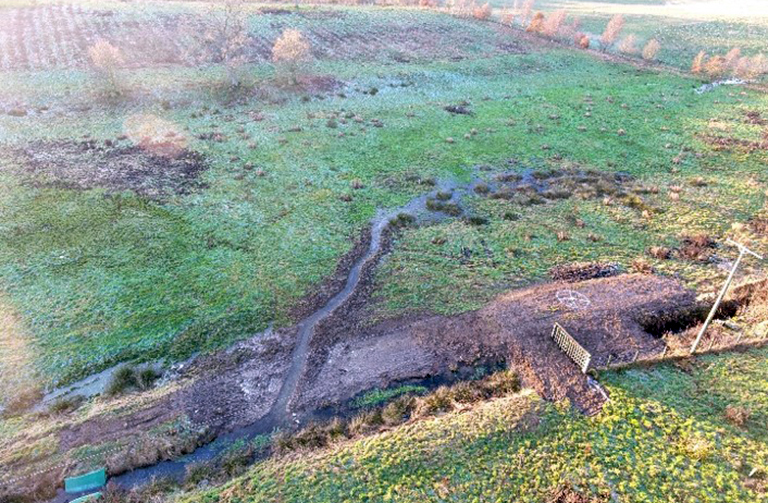Eden Rivers Trust awarded £1.2m funding to further improve and protect Eden’s rivers
News of a welcome boost to our long-term river improvement and restoration programme

We were granted funding in 2017 to develop a river restoration project on the Bessy Gill near Thrimby Cottages as part of the Cumbria River Restoration Strategy (RRS), led by the Environment Agency.
The plan was to return the river to its original floodplain, improve over 1km of river habitat and restore 23ha of floodplain habitat. Also included was the creation of a 1.6ha flood storage area/large pond.
This would be one of the first restoration projects in the UK that would take a ‘stage zero’ approach to restoring natural river processes.
What is ‘stage zero’ river restoration?
Usually, when we restore rivers, we re-wriggle straightened river channels by adding meanders. In a ‘stage zero’ restoration such as this, we filled in the existing river channel where it enters a culvert under the M6, and created a channel to allow the river to spill out into its natural floodplain. This will allow the river to behave as it would have done before any human interference, creating multiple channels, pools and riffles.
This area had previously been planted with a number of native broadleaf trees, to provide a more natural habitat and increase the natural flood management (NFM) capacity of the site.
Channel restoration designs were worked up by Eden Rivers Trust, working together with the Environment Agency. These designs were then built on in conjunction with Cbec EcoEngineering and the landowner, Lowther Estates to maximise the amount of available wildlife habitat.
Making a pond an NFM feature
Historically, there had been a ‘lake’ on the site. To this day, there remains an iron ring set in a stone in the field that small boats would have once been moored to.
Environmental consultancy, Cbec EcoEngineering was contracted to undertake a feasibility and design study for the pond creation. This would set the size and capacity of the pond as a Natural Flood Management (NFM) feature.
Work begins
Once designs were finalised, the capital works were sent out to tender to a number of local and national contractors. Lowther Forestry won the tender, putting in a very insightful and competitive bid, and work began on site in September of 2019.
Despite unforgiving weather conditions, the project took a total of approximately three weeks. The majority of this was spent on the creation of the pond area. The river restoration only took around three days to complete due to the very low amount of intervention required.
This project is now being monitored by a number of organisations, including Eden Rivers Trust (drone survey and ecological monitoring), University of Lancaster (PhD and QNFM project) as well as by undergraduate studies of flooding and water quality.
Highlights:
Since the autumn, we have noticed lots of herons feeding on voles and the river has already started to develop its own natural course, linking up with the downstream channel as predicted. There is a definite change in the water levels on the downstream flume (so showing that water is staying in Bessy Gill, rather than going directly into the river Leith) which is encouraging.
18 days in the life of a pond (timelapse 29.12.19-14.01.20)